Feature-Dependent Cross-Connections in Multi-Path Neural Networks
Dumindu Tissera,
Kasun Vithanage,
Rukshan Wijesinghe,
Kumara Kahatapitiya,
Subha Fernando,
Ranga Rodrigo

Auto-TLDR; Multi-path Networks for Adaptive Feature Extraction
Similar papers
Contextual Classification Using Self-Supervised Auxiliary Models for Deep Neural Networks
Sebastian Palacio, Philipp Engler, Jörn Hees, Andreas Dengel

Auto-TLDR; Self-Supervised Autogenous Learning for Deep Neural Networks
Abstract Slides Poster Similar
Attention As Activation
Yimian Dai, Stefan Oehmcke, Fabian Gieseke, Yiquan Wu, Kobus Barnard

Auto-TLDR; Attentional Activation Units for Convolutional Networks
Dynamic Multi-Path Neural Network
Yingcheng Su, Yichao Wu, Ken Chen, Ding Liang, Xiaolin Hu

Auto-TLDR; Dynamic Multi-path Neural Network
CQNN: Convolutional Quadratic Neural Networks

Auto-TLDR; Quadratic Neural Network for Image Classification
Abstract Slides Poster Similar
Attention Pyramid Module for Scene Recognition
Zhinan Qiao, Xiaohui Yuan, Chengyuan Zhuang, Abolfazl Meyarian

Auto-TLDR; Attention Pyramid Module for Multi-Scale Scene Recognition
Abstract Slides Poster Similar
Learnable Higher-Order Representation for Action Recognition

Auto-TLDR; Learningable Higher-Order Operations for Spatiotemporal Dynamics in Video Recognition
Improved Residual Networks for Image and Video Recognition
Ionut Cosmin Duta, Li Liu, Fan Zhu, Ling Shao

Auto-TLDR; Residual Networks for Deep Learning
Abstract Slides Poster Similar
Context-Aware Residual Module for Image Classification

Auto-TLDR; Context-Aware Residual Module for Image Classification
Abstract Slides Poster Similar
Efficient-Receptive Field Block with Group Spatial Attention Mechanism for Object Detection
Jiacheng Zhang, Zhicheng Zhao, Fei Su

Auto-TLDR; E-RFB: Efficient-Receptive Field Block for Deep Neural Network for Object Detection
Abstract Slides Poster Similar
Attention Based Pruning for Shift Networks
Ghouthi Hacene, Carlos Lassance, Vincent Gripon, Matthieu Courbariaux, Yoshua Bengio

Auto-TLDR; Shift Attention Layers for Efficient Convolutional Layers
Abstract Slides Poster Similar
Second-Order Attention Guided Convolutional Activations for Visual Recognition
Shannan Chen, Qian Wang, Qiule Sun, Bin Liu, Jianxin Zhang, Qiang Zhang
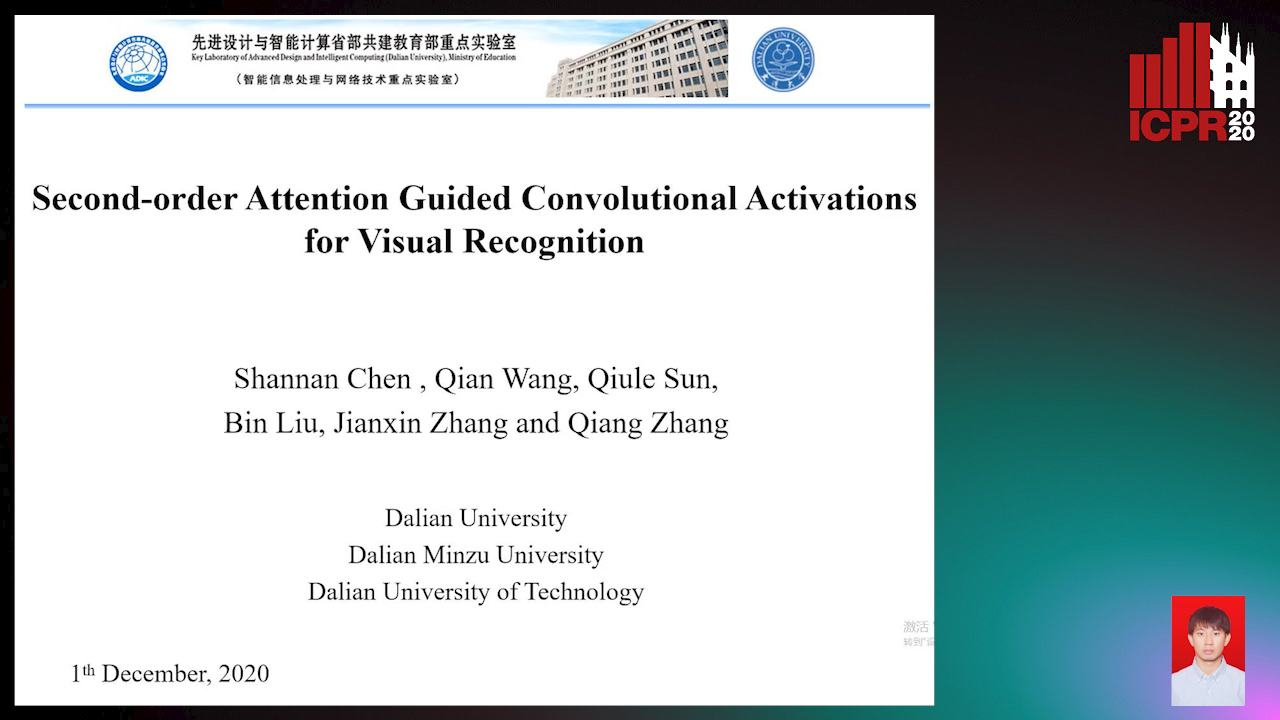
Auto-TLDR; Second-order Attention Guided Network for Convolutional Neural Networks for Visual Recognition
Abstract Slides Poster Similar
From Early Biological Models to CNNs: Do They Look Where Humans Look?
Marinella Iole Cadoni, Andrea Lagorio, Enrico Grosso, Jia Huei Tan, Chee Seng Chan
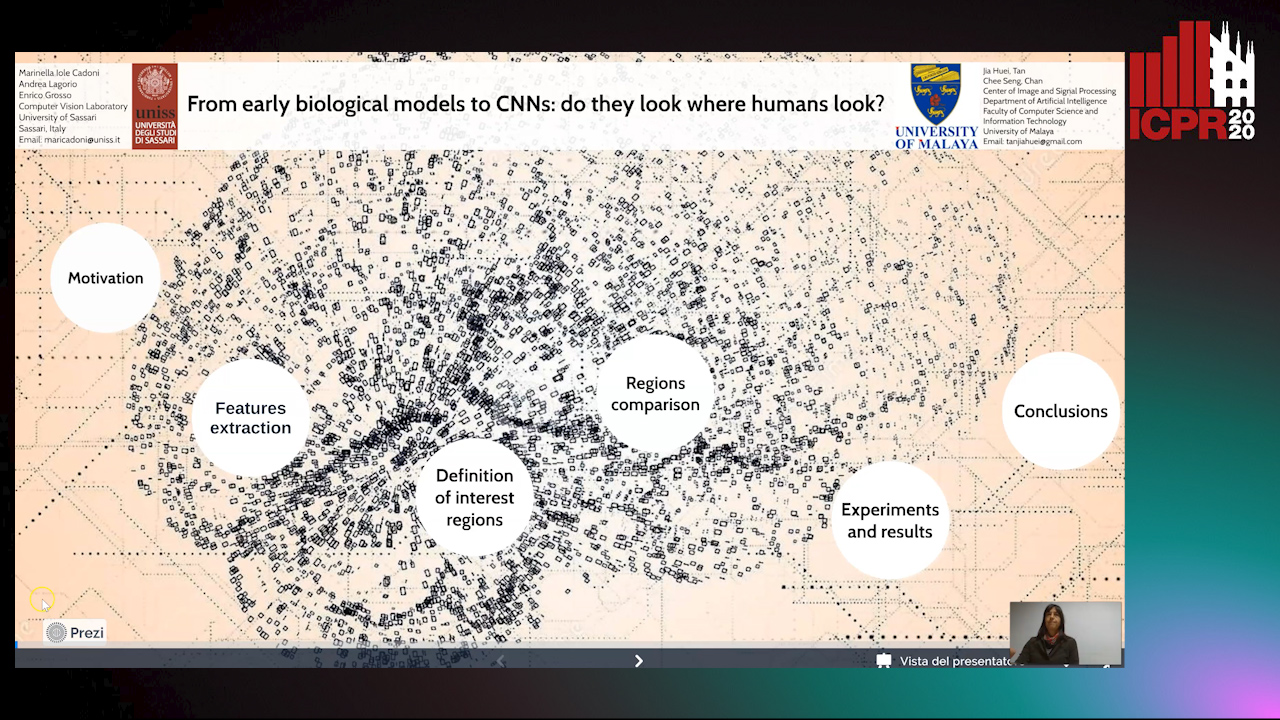
Auto-TLDR; Comparing Neural Networks to Human Fixations for Semantic Learning
Abstract Slides Poster Similar
On the Information of Feature Maps and Pruning of Deep Neural Networks
Mohammadreza Soltani, Suya Wu, Jie Ding, Robert Ravier, Vahid Tarokh

Auto-TLDR; Compressing Deep Neural Models Using Mutual Information
Abstract Slides Poster Similar
Image Representation Learning by Transformation Regression
Xifeng Guo, Jiyuan Liu, Sihang Zhou, En Zhu, Shihao Dong

Auto-TLDR; Self-supervised Image Representation Learning using Continuous Parameter Prediction
Abstract Slides Poster Similar
Neuron-Based Network Pruning Based on Majority Voting
Ali Alqahtani, Xianghua Xie, Ehab Essa, Mark W. Jones

Auto-TLDR; Large-Scale Neural Network Pruning using Majority Voting
Abstract Slides Poster Similar
Feature Fusion for Online Mutual Knowledge Distillation
Jangho Kim, Minsung Hyun, Inseop Chung, Nojun Kwak
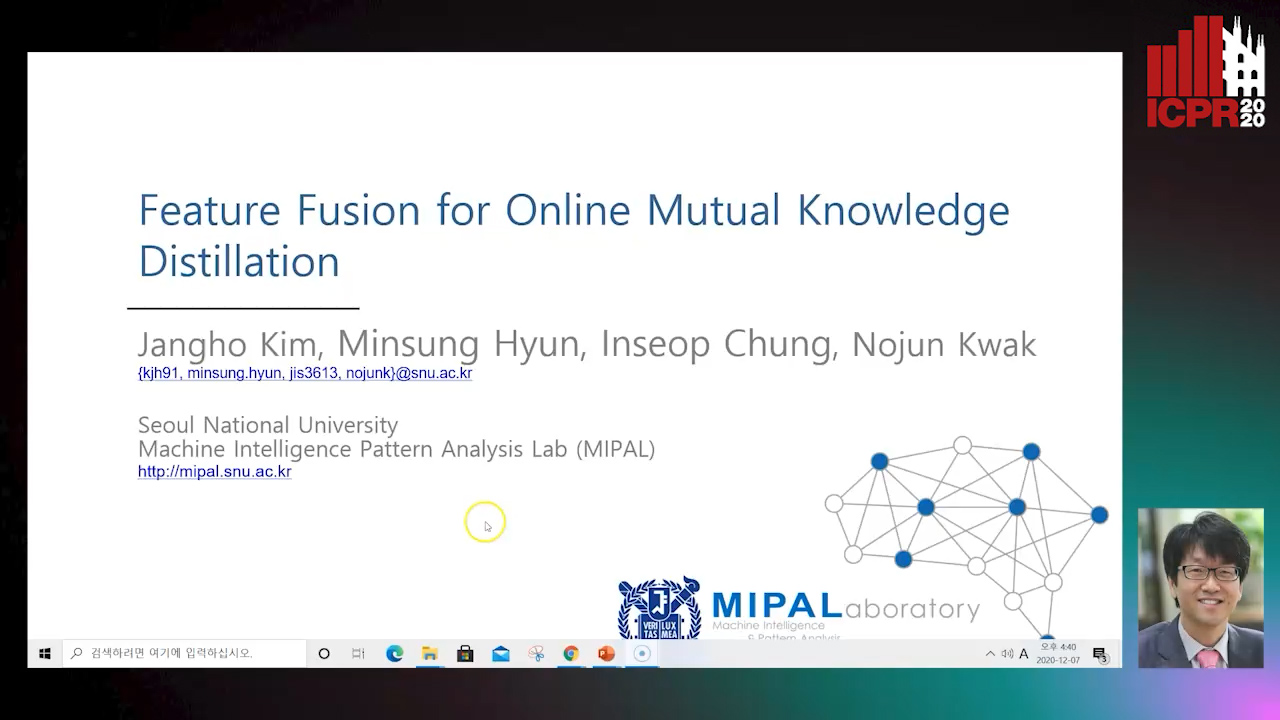
Auto-TLDR; Feature Fusion Learning Using Fusion of Sub-Networks
Abstract Slides Poster Similar
Norm Loss: An Efficient yet Effective Regularization Method for Deep Neural Networks
Theodoros Georgiou, Sebastian Schmitt, Thomas Baeck, Wei Chen, Michael Lew

Auto-TLDR; Weight Soft-Regularization with Oblique Manifold for Convolutional Neural Network Training
Abstract Slides Poster Similar
Learning to Prune in Training via Dynamic Channel Propagation
Shibo Shen, Rongpeng Li, Zhifeng Zhao, Honggang Zhang, Yugeng Zhou

Auto-TLDR; Dynamic Channel Propagation for Neural Network Pruning
Abstract Slides Poster Similar
Not All Domains Are Equally Complex: Adaptive Multi-Domain Learning
Ali Senhaji, Jenni Karoliina Raitoharju, Moncef Gabbouj, Alexandros Iosifidis

Auto-TLDR; Adaptive Parameterization for Multi-Domain Learning
Abstract Slides Poster Similar
ResNet-Like Architecture with Low Hardware Requirements
Elena Limonova, Daniil Alfonso, Dmitry Nikolaev, Vladimir V. Arlazarov

Auto-TLDR; BM-ResNet: Bipolar Morphological ResNet for Image Classification
Abstract Slides Poster Similar
PSDNet: A Balanced Architecture of Accuracy and Parameters for Semantic Segmentation

Auto-TLDR; Pyramid Pooling Module with SE1Cblock and D2SUpsample Network (PSDNet)
Abstract Slides Poster Similar
MaxDropout: Deep Neural Network Regularization Based on Maximum Output Values
Claudio Filipi Gonçalves Santos, Danilo Colombo, Mateus Roder, Joao Paulo Papa

Auto-TLDR; MaxDropout: A Regularizer for Deep Neural Networks
Abstract Slides Poster Similar
SCA Net: Sparse Channel Attention Module for Action Recognition
Hang Song, Yonghong Song, Yuanlin Zhang
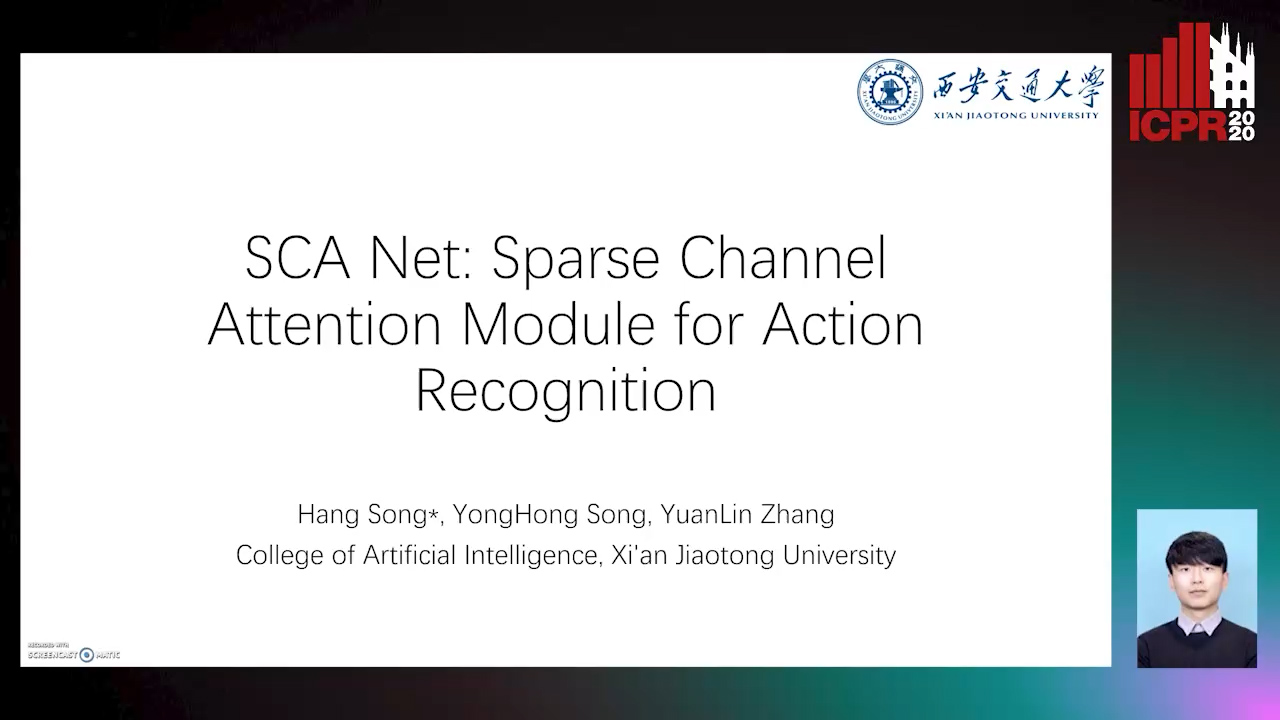
Auto-TLDR; SCA Net: Efficient Group Convolution for Sparse Channel Attention
Abstract Slides Poster Similar
Trainable Spectrally Initializable Matrix Transformations in Convolutional Neural Networks
Michele Alberti, Angela Botros, Schuetz Narayan, Rolf Ingold, Marcus Liwicki, Mathias Seuret

Auto-TLDR; Trainable and Spectrally Initializable Matrix Transformations for Neural Networks
Abstract Slides Poster Similar
Quaternion Capsule Networks
Barış Özcan, Furkan Kınlı, Mustafa Furkan Kirac
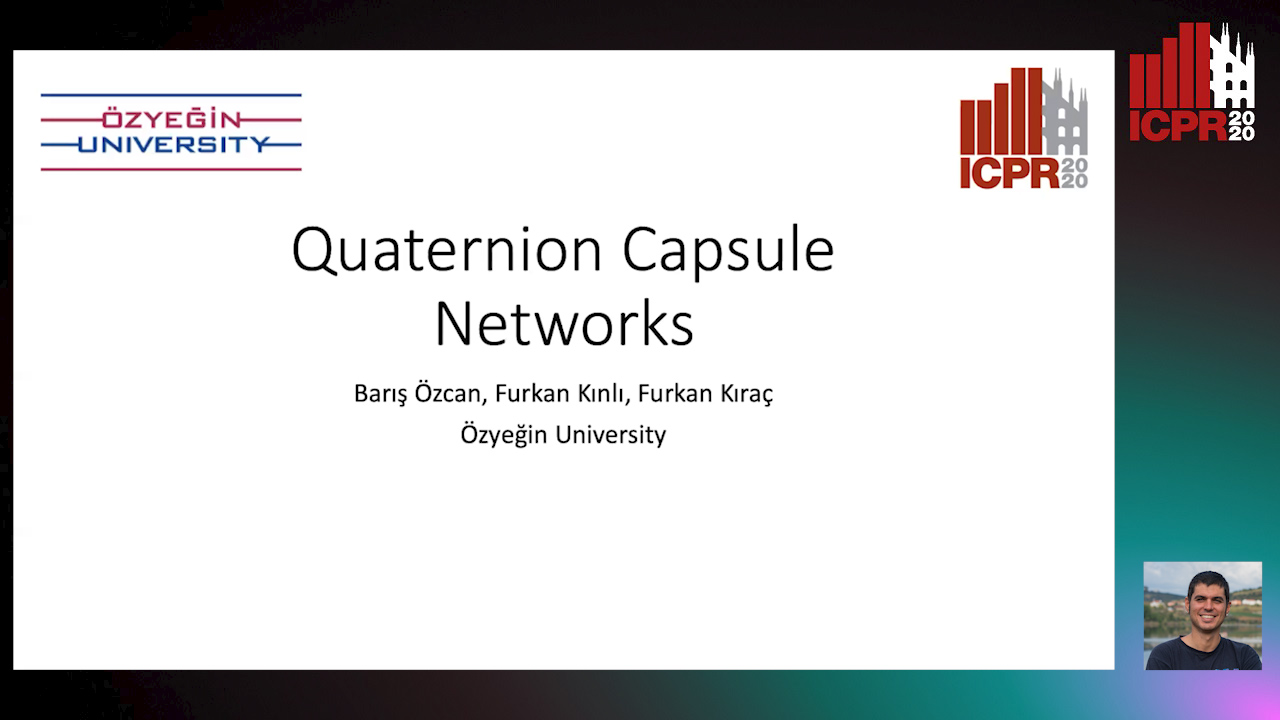
Auto-TLDR; Quaternion Capsule Networks for Object Recognition
Abstract Slides Poster Similar
Single Image Super-Resolution with Dynamic Residual Connection
Karam Park, Jae Woong Soh, Nam Ik Cho

Auto-TLDR; Dynamic Residual Attention Network for Lightweight Single Image Super-Residual Networks
Abstract Slides Poster Similar
WeightAlign: Normalizing Activations by Weight Alignment
Xiangwei Shi, Yunqiang Li, Xin Liu, Jan Van Gemert

Auto-TLDR; WeightAlign: Normalization of Activations without Sample Statistics
Abstract Slides Poster Similar
Revisiting the Training of Very Deep Neural Networks without Skip Connections
Oyebade Kayode Oyedotun, Abd El Rahman Shabayek, Djamila Aouada, Bjorn Ottersten

Auto-TLDR; Optimization of Very Deep PlainNets without shortcut connections with 'vanishing and exploding units' activations'
Abstract Slides Poster Similar
Dual-Attention Guided Dropblock Module for Weakly Supervised Object Localization
Junhui Yin, Siqing Zhang, Dongliang Chang, Zhanyu Ma, Jun Guo

Auto-TLDR; Dual-Attention Guided Dropblock for Weakly Supervised Object Localization
Abstract Slides Poster Similar
Resource-efficient DNNs for Keyword Spotting using Neural Architecture Search and Quantization
David Peter, Wolfgang Roth, Franz Pernkopf

Auto-TLDR; Neural Architecture Search for Keyword Spotting in Limited Resource Environments
Abstract Slides Poster Similar
Learning a Dynamic High-Resolution Network for Multi-Scale Pedestrian Detection
Mengyuan Ding, Shanshan Zhang, Jian Yang

Auto-TLDR; Learningable Dynamic HRNet for Pedestrian Detection
Abstract Slides Poster Similar
Improving Batch Normalization with Skewness Reduction for Deep Neural Networks
Pak Lun Kevin Ding, Martin Sarah, Baoxin Li

Auto-TLDR; Batch Normalization with Skewness Reduction
Abstract Slides Poster Similar
Color, Edge, and Pixel-Wise Explanation of Predictions Based onInterpretable Neural Network Model

Auto-TLDR; Explainable Deep Neural Network with Edge Detecting Filters
Generalization Comparison of Deep Neural Networks Via Output Sensitivity
Mahsa Forouzesh, Farnood Salehi, Patrick Thiran

Auto-TLDR; Generalization of Deep Neural Networks using Sensitivity
Slimming ResNet by Slimming Shortcut
Donggyu Joo, Doyeon Kim, Junmo Kim

Auto-TLDR; SSPruning: Slimming Shortcut Pruning on ResNet Based Networks
Abstract Slides Poster Similar
VPU Specific CNNs through Neural Architecture Search
Ciarán Donegan, Hamza Yous, Saksham Sinha, Jonathan Byrne

Auto-TLDR; Efficient Convolutional Neural Networks for Edge Devices using Neural Architecture Search
Abstract Slides Poster Similar
Operation and Topology Aware Fast Differentiable Architecture Search
Shahid Siddiqui, Christos Kyrkou, Theocharis Theocharides

Auto-TLDR; EDARTS: Efficient Differentiable Architecture Search with Efficient Optimization
Abstract Slides Poster Similar
A Discriminant Information Approach to Deep Neural Network Pruning

Auto-TLDR; Channel Pruning Using Discriminant Information and Reinforcement Learning
Abstract Slides Poster Similar
Automatic Semantic Segmentation of Structural Elements related to the Spinal Cord in the Lumbar Region by Using Convolutional Neural Networks
Jhon Jairo Sáenz Gamboa, Maria De La Iglesia-Vaya, Jon Ander Gómez

Auto-TLDR; Semantic Segmentation of Lumbar Spine Using Convolutional Neural Networks
Abstract Slides Poster Similar
Efficient Online Subclass Knowledge Distillation for Image Classification
Maria Tzelepi, Nikolaos Passalis, Anastasios Tefas

Auto-TLDR; OSKD: Online Subclass Knowledge Distillation
Abstract Slides Poster Similar
MINT: Deep Network Compression Via Mutual Information-Based Neuron Trimming
Madan Ravi Ganesh, Jason Corso, Salimeh Yasaei Sekeh
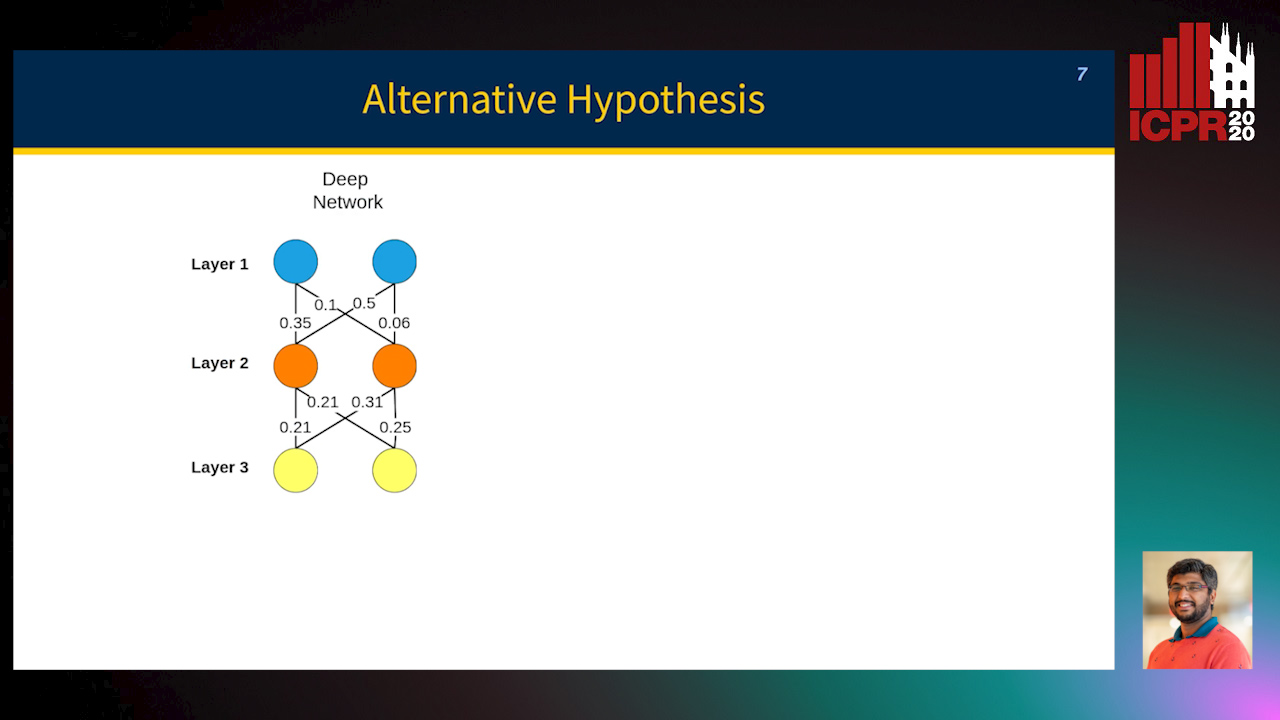
Auto-TLDR; Mutual Information-based Neuron Trimming for Deep Compression via Pruning
Abstract Slides Poster Similar
Hierarchically Aggregated Residual Transformation for Single Image Super Resolution

Auto-TLDR; HARTnet: Hierarchically Aggregated Residual Transformation for Multi-Scale Super-resolution
Abstract Slides Poster Similar
TAAN: Task-Aware Attention Network for Few-Shot Classification

Auto-TLDR; TAAN: Task-Aware Attention Network for Few-Shot Classification
Abstract Slides Poster Similar
Kernel-based Graph Convolutional Networks

Auto-TLDR; Spatial Graph Convolutional Networks in Recurrent Kernel Hilbert Space
Abstract Slides Poster Similar
Multi-Domain Image-To-Image Translation with Adaptive Inference Graph
The Phuc Nguyen, Stéphane Lathuiliere, Elisa Ricci

Auto-TLDR; Adaptive Graph Structure for Multi-Domain Image-to-Image Translation
Abstract Slides Poster Similar
E-DNAS: Differentiable Neural Architecture Search for Embedded Systems
Javier García López, Antonio Agudo, Francesc Moreno-Noguer

Auto-TLDR; E-DNAS: Differentiable Architecture Search for Light-Weight Networks for Image Classification
Abstract Slides Poster Similar
Exploiting Non-Linear Redundancy for Neural Model Compression
Muhammad Ahmed Shah, Raphael Olivier, Bhiksha Raj

Auto-TLDR; Compressing Deep Neural Networks with Linear Dependency
Abstract Slides Poster Similar
Can Data Placement Be Effective for Neural Networks Classification Tasks? Introducing the Orthogonal Loss
Brais Cancela, Veronica Bolon-Canedo, Amparo Alonso-Betanzos

Auto-TLDR; Spatial Placement for Neural Network Training Loss Functions
Abstract Slides Poster Similar